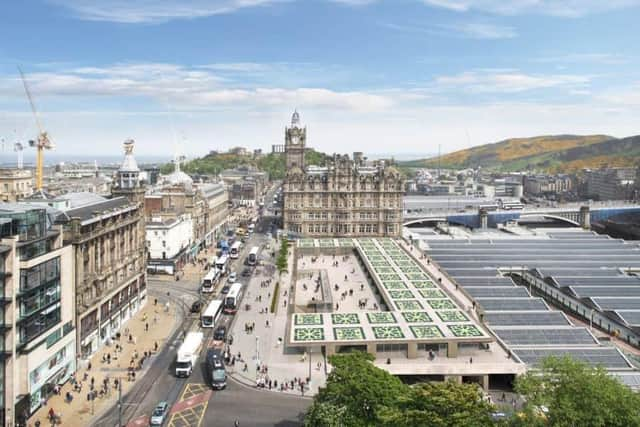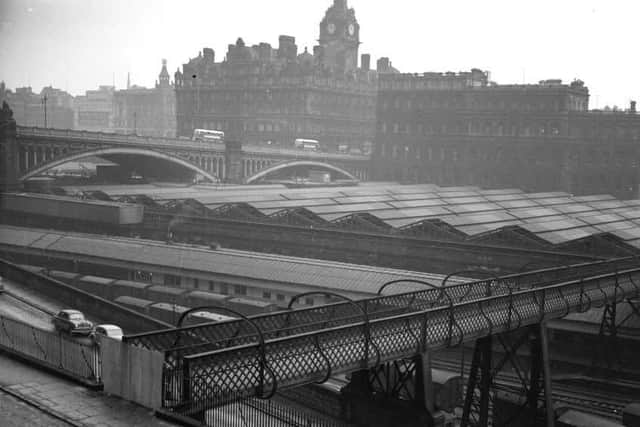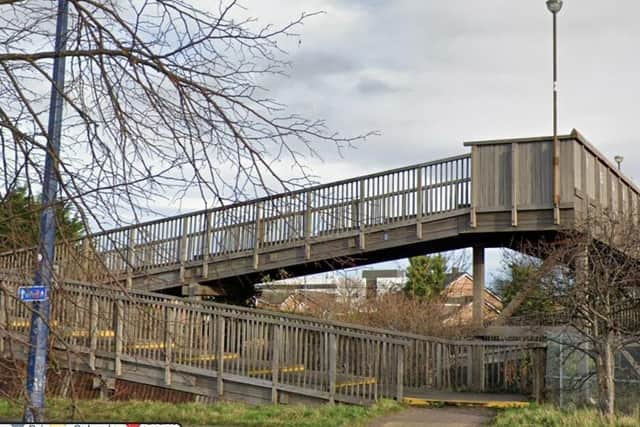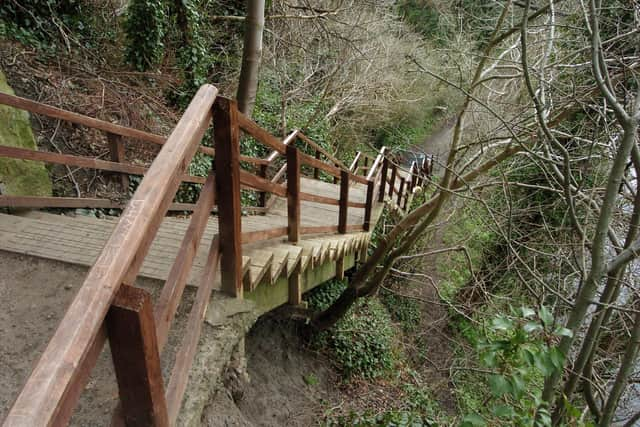Edinburgh walking and cycling: These are 6 bridges which could be built to make it easier to get around
and live on Freeview channel 276
Six new bridges – including one right across the Waverley valley – could be built as part of Edinburgh’s drive to improve walking and cycling connections around the city.
The city council’s Active Travel Action Plan, due to be approved by the transport committee on Thursday (February 2) says there are places in the Capital where a new bridge could make a big difference to people’s ability to get about the city easily on foot or by bike. But it warns that bridges are expensive, so they won’t all be built immediately.
Advertisement
Hide AdAdvertisement
Hide AdThe most eye-catching suggestion is a bridge between the New Town and the Old Town over the Waverley valley, where the station sits. There used to be a footbridge from Calton Road across to Jeffrey Street. The 200-metre structure, built into the roof of Waverley station, was opened in the 1890s but shut in the 1950s. There have been calls over the years for the route to be re-established and the council’s City Centre Transformation Plan backs the principle of a new bridge but does not go into any detail.


‘It would be a real shortcut’
Transport convener Scott Arthur said: “Because of the railway station and Edinburgh’s topography it’s not an easy pedestrian route. That bridge would make it quicker for pedestrians to get around, but particularly for people with mobility problems it would be a real shortcut – safer because you’re away from traffic and also more level in terms of being able to make the journey without steps. It would also be a landmark structure, something that helped define Edinburgh, so something that’s worth doing well. In Glasgow you have the Squinty Bridge, and in Gateshead/Newcastle you have the Millennium Bride – two new bridges that help define the area because they’ve got that architectural element.”
A report to the transport committee says: “City Centre Transformation agreed the principle of a new bridge for people to walk, wheel and cycle across the Waverley Valley to the east of Waverley Station, further connecting the Old and New Towns between Jeffrey Street and Calton Road. Routing options were explored as part of the emerging Waverley Station Masterplan, which embeds a link at the lower level between East Market Street and Calton Road. This bridge would need to be delivered in conjunction with major redevelopment work at Waverley Station."
The other new bridges proposed are:


Roseburn Bridge
It would connect the North Edinburgh Path Network over the tram line and the main Edinburgh-Glasgow railway to the new Roseburn to Union Canal route. The council says this bridge would provide an accessible connection between the two routes, avoiding the need to descend and then reascend about eight metres (30 feet) via long ramps. It adds that the ramp connecting to the southern end of the Roseburn path currently has a challenging gradient for people who are wheeling or using adapted cycles.
Gyle Bridge
Advertisement
Hide AdAdvertisement
Hide AdThis bridge would connecting communities across the railway line as part of the West Edinburgh Link, which aims to make it easier to walk or cycle between South Gyle, Edinburgh Park and neighbouring areas. The council says the Fife railway line forms a barrier between local communities in west Edinburgh, with a lengthy diversion to get across the railway for people walking, wheeling and cycling.


Brunstane Bridge
There is already an existing bridge at Brunstane Station over the Border railway line. It is part of National Cycle Route 1 and is a key connection for communities wishing to cycle from Brunstane and Joppa towards the city centre. However, the council says the current bridge is stepped and inaccessible for anyone wheeling or using adapted bikes, whilst those cycling must dismount.
Alternative to Salveson Steps
The council says the leisure route along the River Almond is currently inaccessible due the Salveson Steps, which negotiate a steep outcrop in the river valley. The report adds: “The community have worked closely with the parks and greenspaces team to identify an accessible alternative to allow everyone to access the beautiful greenspace along the River Almond.”


Slateford Aqueduct
The Union Canal is a popular place for people to walk and cycle, both on everyday trips and for leisure. But the council says the path across the historic Slateford Aqueduct is very narrow and cobbled. Cyclists must dismount and it is too narrow for many wheelchairs. Studies have proposed various possible solutions including a parallel walking and cycling deck attached to the current aqueduct, or a completely new structure that would allow everyone to use this popular route comfortably and safely.
Advertisement
Hide AdAdvertisement
Hide AdTh transport committee is expected to agree to carry out a public consultation on the Active Travel Action Plan, which sets out a wide range of measures to encourage walking, wheeling and cycling in Edinburgh over the period to 2030 and beyond.
But in the section discussing bridges the report says: “Bridges are very expensive to build. We therefore do not expect to be able to deliver all these bridges over the lifespan of the Action Plan. However, we will look to move designs forward and secure funding where possible, taking into account where the need is greatest, and which bridge(s) align best with the proposed development of the wider network in the plan and with funding opportunities.”